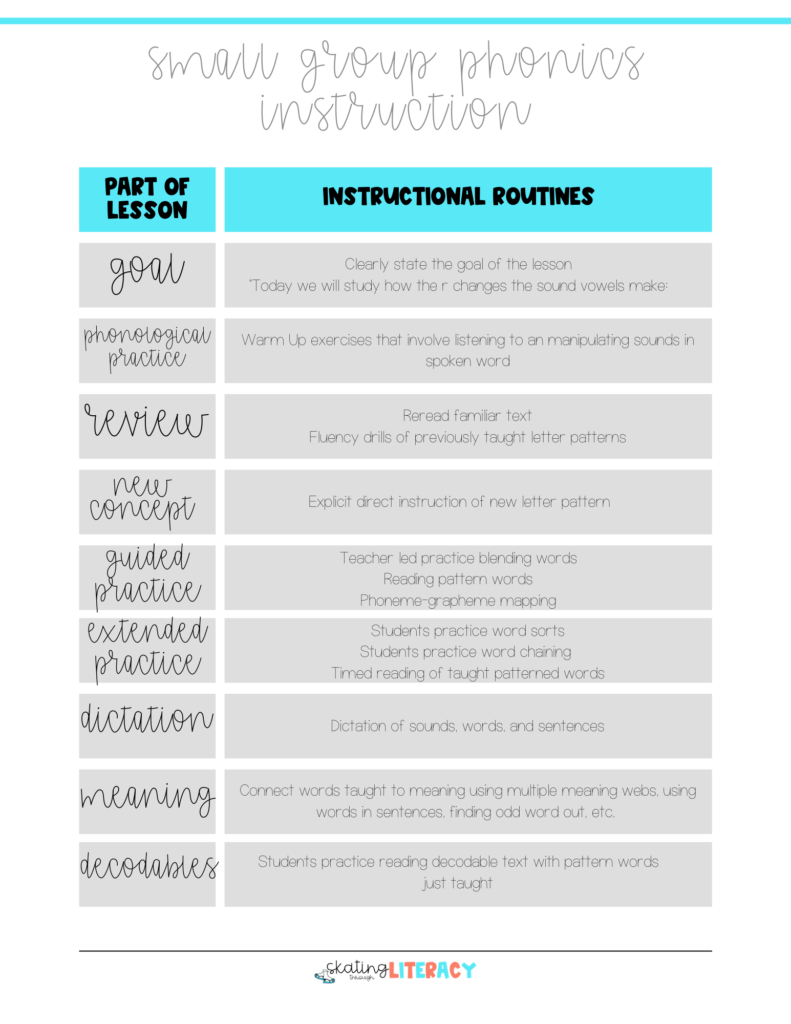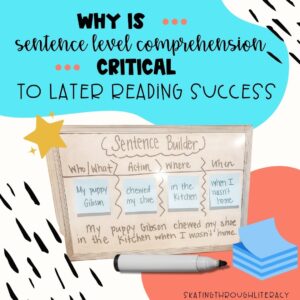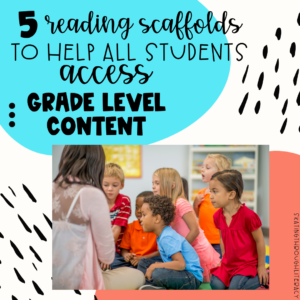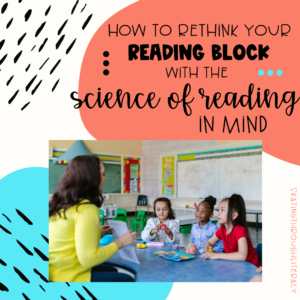Why Decodable Text Passages Need to be part of your Instruction
Decodable text passages are boring. They lack student interest. They’re not engaging. They’re old school.
These are just some of the misconceptions around using decodable text passages in the classroom.
And listen, I get it. I was this teacher too. As a first year teacher, I took one look at the decodable readers I was provided with and thought, “This will never work for my kids.”
But when you know better, do better. After 10 years in the classroom, and whole lot more training around solid reading instruction, I’ve turned a new leaf in my attitude towards decodable readers. I now see the value and importance of this text as part of a structured literacy approach. Let me show you why decodable text passages need to be part of your instruction as well.
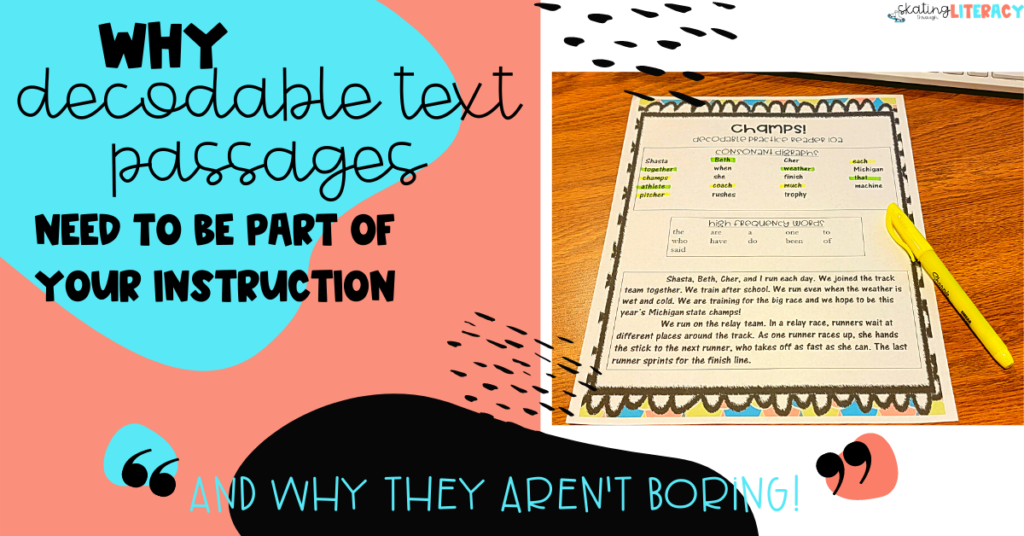
What is decodable text?
Decodable text is a reading passage that is based on a phonics pattern taught. Decodable text allows students to focus on the alphabetic code they have been taught, rather than relying on guessing, pictures, or simply memorization. The purpose of the decodable text is to allow students to develop their ability to decode the words based on the sound principles taught through applicable practice.
This varies drastically from leveled text. Leveled text or passages have a mixed array of high frequency words and predictable text patterns. These levels are assigned a letter A-Z based on four main ideas: print features, context ideas and themes, text structure, and literary elements.
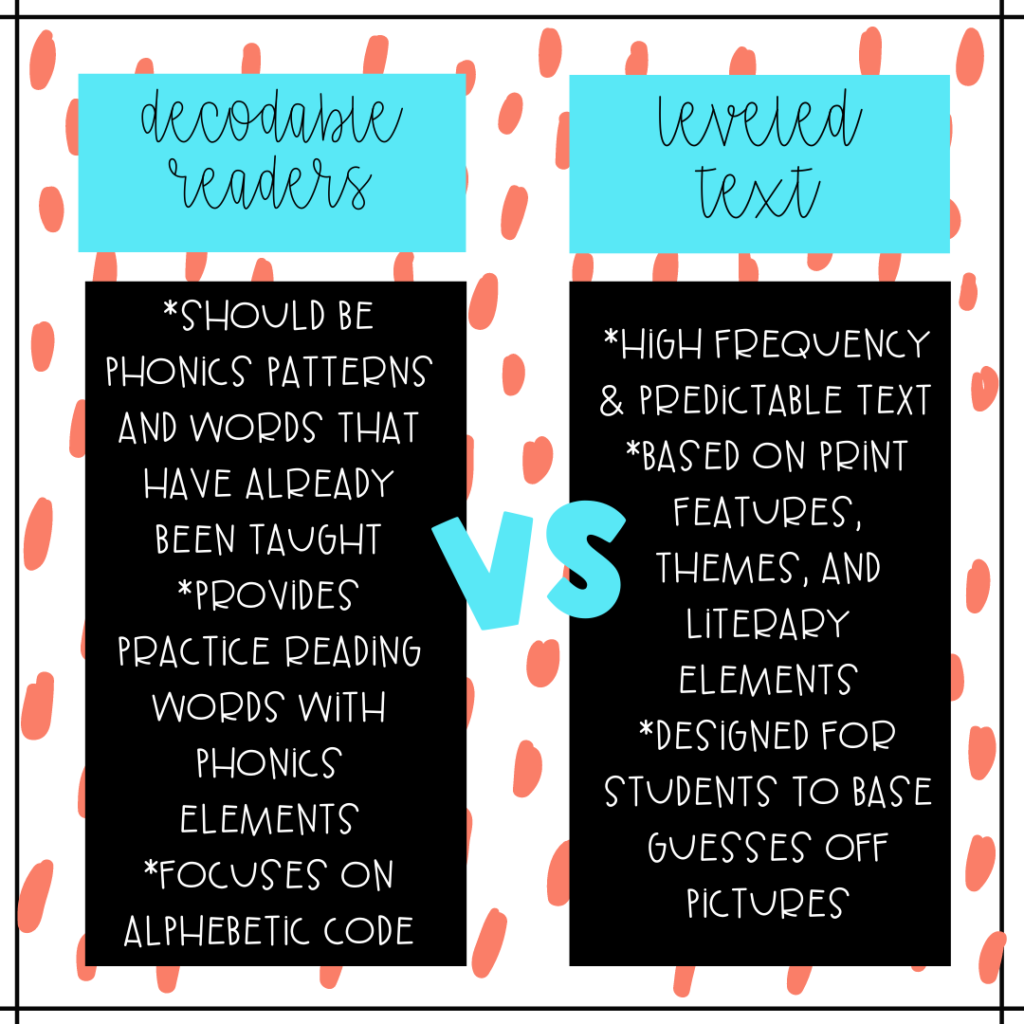
However, these levels can be subjective. For example just last week I was working with a student at the level B, with very few phonics skills mastered. The level text given to me had words like “animals” and “athletes.” These are words a level B reader does not have the ability to decode for yet. This type of text encourages students to guess at words, rather than breaking apart words and reading their alphabetic code.
When should I use decodable text passages?
Decodable text should be used as the last part of a thorough phonics lesson plan. To learn more about what else is included in a phonics lesson plan be sure to check out my 7 ways to revamp your phonics instruction workbook. Before students ever approach a decodable text passages, they should have been explicitly taught the phonics pattern. There are many steps involved in explicitly teaching a phonics pattern which are discussed in other blog posts. Be sure to check out this post about mapping phonemes to graphemes which is one of my favorite strategies used to explicitly introduce phonics patterns.
Once the explicitly teaching has been done, students are ready for decodable text. This passage should have a high proportion of words with the phonics skill being targeted. This practice does not need to be long, but should be frequent. Depending on the level of the student and engagement, this practice can be anywhere from 5-20 minutes daily.
How should I use decodable text?
Before students begin reading, it is important to prepare them for success by reviewing the phonics skill being targeted. Here is a quick example of how you might introduce a decodable text at the beginning of the week:
- Start by highlighting the skill words in the passage.
- Read the highlighted words together.
- Preview the text by browsing any pictures provided, predicting what the story might be about & briefly discussing any background knowledge the students might have
- Have the students read the whole passage with highlighted words.
- Provide a clean copy of the same text and have students read the passage without the highlights.

By following these processes with 3-4 different decodable passages with the same phonics skill targeted, students will achieve the goal of being able to read a text independently.
How many decodable texts do I need for one phonics skill?
Really this varies by reader. My above grade level students don’t necessarily need 3 different passages in a week. However, they still greatly benefit from practicing the decodable text. As a general rule of thumb, I usually have 3 decodable texts available per phonics skill. We will use the same passage Monday & Tuesday, switch to a new one Wednesday & Thursday, then have a final practice Friday.
Start Small with Decodable Texts
If you overwhelmed or new to using decodable passages, start small! Choose one reading group that would really benefit from this practice and start tomorrow. After you lead a group through a few passages, you will begin to feel more confident in the routines and procedures. Once you feel like you’re routines are becoming more solidified, you can add on more reading groups or strategies.
Looking to Jump Start your Instruction with Decodable Texts?
As I became more educated around the importance of decodable text with my students, I also became aware that I didn’t have great decodable texts available to me. At the same time I found myself in the world of virtual teaching. Due to my own needs in the classroom, I developed digital word work for the phonics skills I am required to teach. Each digital word work comes with 3 decodable text passages. Check out my store for all the available phonics patterns.

Teaching reading groups virtually? Don’t worry- you can easily apply the skills I talked about here through virtual guided reading groups. Be sure to check out this blog post about my 5 tips for virtual guided reading groups. You can share the decodable text passages with your students using a variety of online platforms like google slides, jamboards, or classkick.


